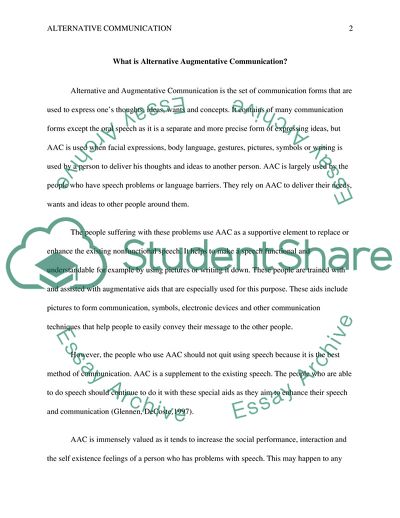Cite this document
(Alternative Augmentative Communication Used in Cases of Autism Report Example | Topics and Well Written Essays - 2000 words, n.d.)
Alternative Augmentative Communication Used in Cases of Autism Report Example | Topics and Well Written Essays - 2000 words. https://studentshare.org/education/1795265-alternative-augmentative-communication-and-communication-devices-history-when-used-with-cases-of-autism-and-results
Alternative Augmentative Communication Used in Cases of Autism Report Example | Topics and Well Written Essays - 2000 words. https://studentshare.org/education/1795265-alternative-augmentative-communication-and-communication-devices-history-when-used-with-cases-of-autism-and-results
(Alternative Augmentative Communication Used in Cases of Autism Report Example | Topics and Well Written Essays - 2000 Words)
Alternative Augmentative Communication Used in Cases of Autism Report Example | Topics and Well Written Essays - 2000 Words. https://studentshare.org/education/1795265-alternative-augmentative-communication-and-communication-devices-history-when-used-with-cases-of-autism-and-results.
Alternative Augmentative Communication Used in Cases of Autism Report Example | Topics and Well Written Essays - 2000 Words. https://studentshare.org/education/1795265-alternative-augmentative-communication-and-communication-devices-history-when-used-with-cases-of-autism-and-results.
“Alternative Augmentative Communication Used in Cases of Autism Report Example | Topics and Well Written Essays - 2000 Words”. https://studentshare.org/education/1795265-alternative-augmentative-communication-and-communication-devices-history-when-used-with-cases-of-autism-and-results.


